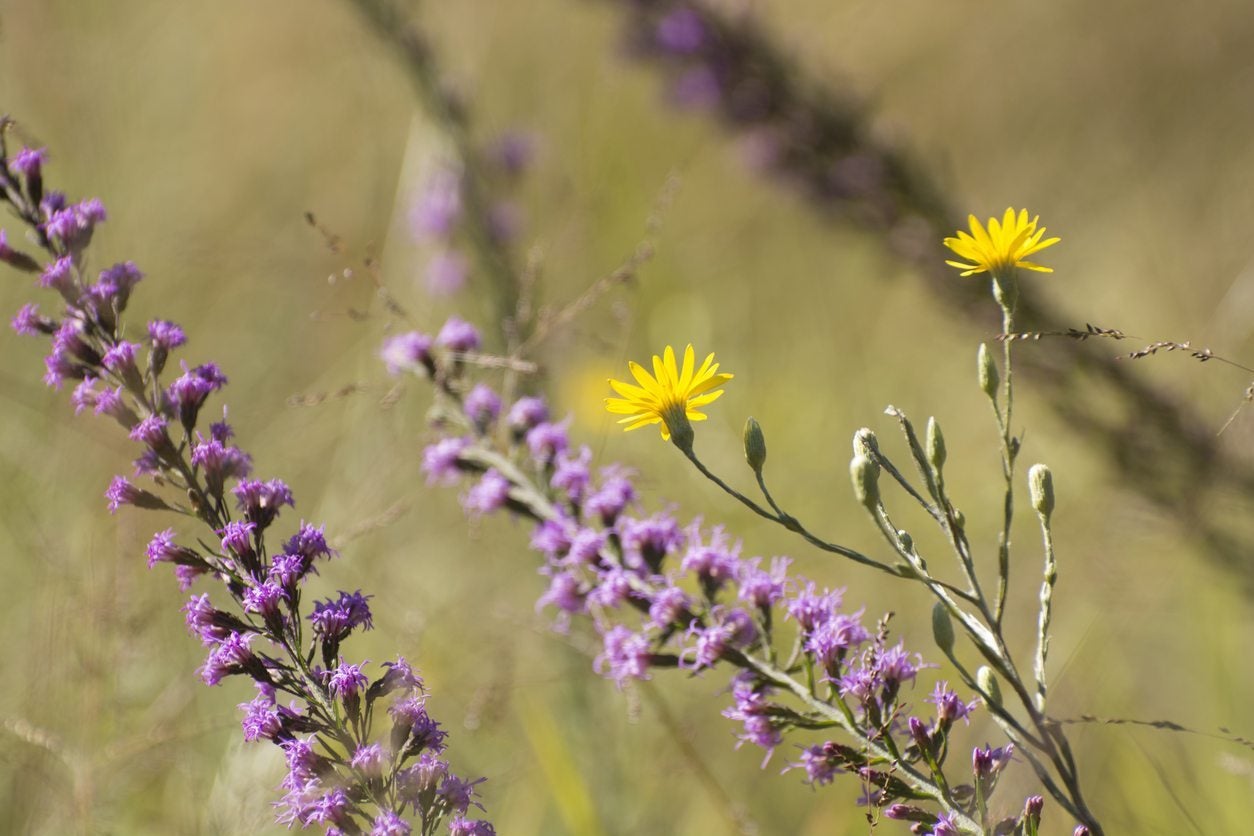Native Zone 9 Flowers: Choosing Wildflowers For Zone 9 Gardens

Flower lovers who live throughout the nation’s southern region might opt to plant heat tolerant USDA zone 9 wildflowers. Why choose to plant zone 9 wildflowers? Since they are native to the region they have adapted to the climate, soil, heat, and amount of irrigation provided in the form of rain. Thus, incorporating native wildflowers for zone 9 into the landscape creates low maintenance plantings that need little extra watering, fertilizer, or insect or disease control.
About Heat Tolerant Wildflowers for Zone 9
Wildflowers are not only low maintenance, but come in a wide array of colors, shapes, and heights making them the perfect additions for those wanting to create a cottage garden. Once the wildflowers have been planted, they require little maintenance; they don’t even need to be deadheaded. Native zone 9 flowers will often reseed themselves, naturally refreshing and replenishing the wildflower garden on their own, year after year. While they require very little care, like all plants, they will benefit from an occasional fertilization with a balanced plant food.
Native Zone 9 Flowers
There are numerous native zone 9 wildflowers, really too many to name in their entirety. Seeds can be found online, in seed catalogs, or sometimes at the local nursery which may also sell seedlings. Among the plethora of wildflowers available to zone 9 growers are:
- African daisy
- Black-eyed Susan
- Bachelor’s button
- Blanket flower
- Blazing star
- Blue flax
- Butterfly weed
- Calendula
- Candytuft
- Coneflower
- Coresopsis
- Cosmos
- Crimson clover
- Dame’s rocket
- Desert marigold
- Drummond phlox
- Evening primrose
- Farewell-to-spring
- Five spot
- Forget-me-not
- Foxglove
- Globe gilia
- Gloriosa daisy
- Hollyhock
- Lacy phacelia
- Lupine
- Mexican hat
- Morning glory
- Moss verbena
- Mountain phlox
- Nasturtium
- New England aster
- Oriental poppy
- Ox-eye daisy
- Purple prairie clover
- Queen Anne’s lace
- Rocket larkspur
- Rocky Mountain bee plant
- Rose mallow
- Scarlet flax
- Scarlet sage
- Sweet alyssum
- Tidy tips
- Yarrow
- Zinnia
How to Grow Wildflowers for Zone 9
Ideally, plant wildflower seeds in autumn so they will have enough time to break seed dormancy. Wildflowers need lots of sun, so choose a location with full sun exposure, at least eight hours per day. They will also thrive in soil that is well-draining and nutrient rich. Prep the soil by turning and amending it with plenty of organic matter such as compost or manure. Allow the turned bed to sit for a few days and then plant the wildflower seeds or transplants. Since most wildflower seeds are impossibly tiny, mix them in with some sand and then sow them. This will help them to be more evenly sowed. Pat the seeds into the soil lightly and cover them with a light sprinkle of soil. Water the newly sown bed deeply but gently so you don’t wash away the seeds. Keep an eye on the bed and make sure it is moist as the seeds germinate. Once the wildflowers are established, it is probably only necessary to water them during extended periods of heat. Both native annual and perennial wildflowers will return the next year if you allow the blooms to dry and self-seed before you cut them down. The successive year’s wildflower garden may not mimic the current years since depending upon the variety, some seed more rapaciously than others but it will no doubt still be alive with color and texture.
Gardening tips, videos, info and more delivered right to your inbox!
Sign up for the Gardening Know How newsletter today and receive a free copy of our e-book "How to Grow Delicious Tomatoes".

Amy Grant has been gardening for 30 years and writing for 15. A professional chef and caterer, Amy's area of expertise is culinary gardening.